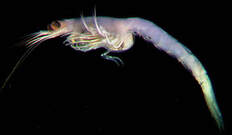 An oil spill is an uncontrolled release of oil, gasoline, or any kind of fuel into the environment. Oil spills can happen on land or in the water, and harm the species who come into contact with the polluted area. The recovery time from an oil spill can be anywhere from a few days to years. How oil spills happen Oil spills can happen in many different ways, including the release of crude oil from tankers and offshore drilling rigs, equipment breaking down, or even from natural disasters such as hurricanes. Once spilled, the oil floats on top of the water and thins out as it spreads rapidly, creating a layer called an oil slick. The effects of spills In the water, oil spills can be extremely harmful and even deadly to marine animals. Oil destroys the ability to insulate by mammals such as otters, and the water-repelling ability of bird feathers, exposing them to the elements. Animals also may swallow the oil when trying to clean themselves, which is poisonous. On land, oil spills can harm crops, plant life, and seep into waterways as run off. Protecting human health is the top priority when cleaning up a land oil spill, since oil can spread quickly and contaminate food and water sources. Cleaning up A study by Mace Barron, Adriana Bejarano, Robyn Commy, Devi Sundaravadivelu, and Peter Mayor, research ecologists for the Environmental Protection Agency looks at the toxicity of oil spill cleaning chemicals and their effect on wildlife. To do this, they selected three chemical agents commonly used in oil spill cleanups (Accell Clean, CytoSol, and Gelco200) and three crude oils differing in their chemical composition. They tested how mysids (a small, shrimp-like organism that resides in estuaries, shown to the left) and inland silversides (a fish) reacted to these agents, observing that the chemical agents were often more toxic than the oil itself. Freshwater species were also affected at the same level as saltwater species, showing that no organisms were safe from the toxicity of chemical agents. Other ways to clean oil spills include booms (floating barriers), skimmers (machines that remove the oil from the top layer of the water), and hydrocarbon pads that absorb oil on land. Oil spills are toxic, not only from the oil but the cleanup too. Crops, coral reefs, and many lifeforms are harmed by this environmental destruction. Fortunately, organizations such as the EPA and the Coast Guard are diligent about cleaning up the spills as quickly and safely as possible, and safer alternatives to the chemical agents are being developed.
0 Comments
Leave a Reply. |
Archives |
